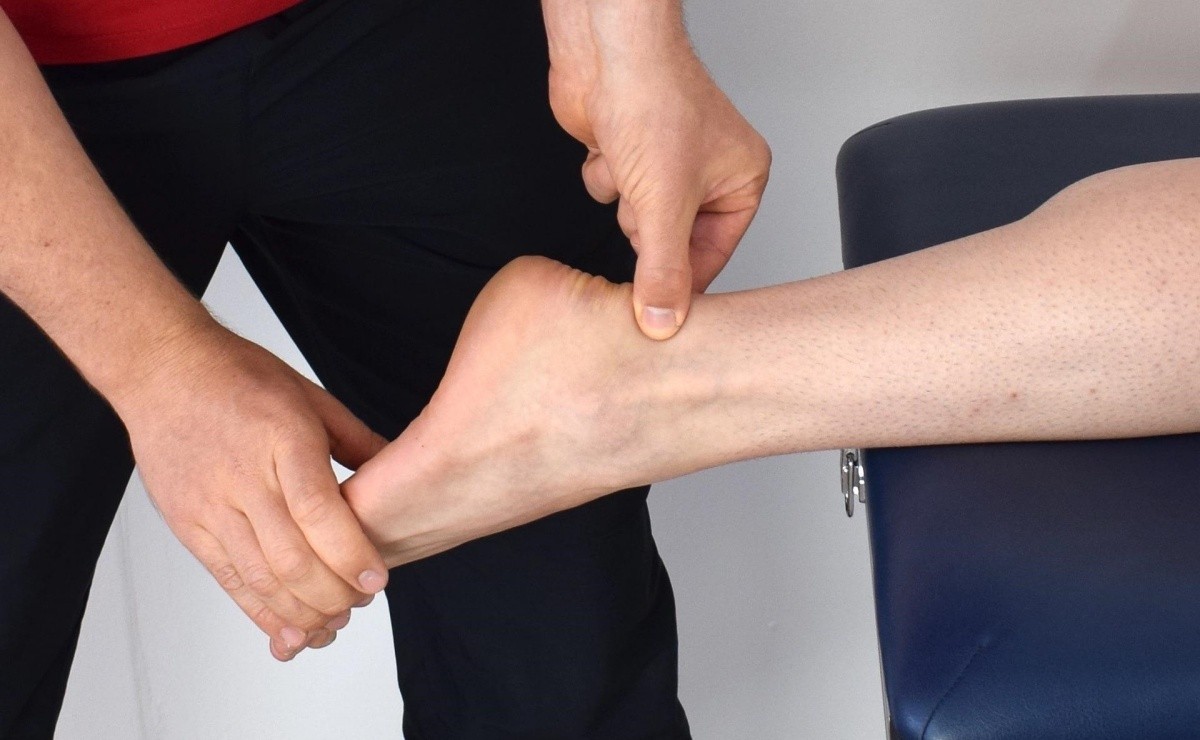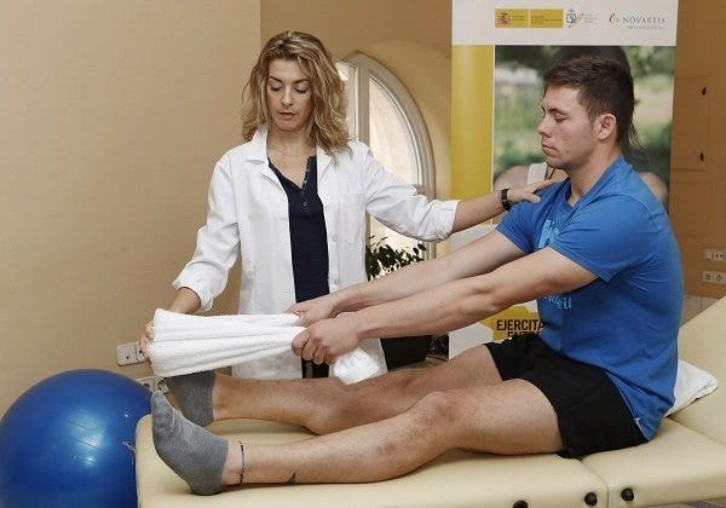
With good weather, when the days get longer and the temperatures invite you to practice sports outdoors, it is common for more ankle sprains to occur
The sprain is the injury of the lower extremity that is most frequently treated in the emergency room and Primary Care, with an incidence of 1/10,000 cases per day.
Although it is more common in athletes, it can happen to anyone: a wrong step on a poorly paved road or a turn too fast in our dance class is enough to suffer a sprain or sprain of an ankle.
This is how Dr. Julio Maset, a doctor from Cinfa, explains it, who points out three types of sprains:

Lateral collateral ligament sprain or ankle inversion: In this type of injury, the sole of the foot usually faces in and the ankle faces out. It affects the ligaments on the outside of the joint. It is the most frequent and depending on the severity of the injury, we have grade I, II or III sprains.
Medial ligament sprain: When the foot is twisted to the other side so that the sole of the foot is pointing out. It affects the ligaments located on the inside of the ankle.
Chronic sprain: if the sprain occurs repeatedly in the same ankle or the pain lasts more than four or six weeks.
Recommendations to avoid that twist
But there are many ways to prevent them, these are the eight tips that Dr. Maset gives us:
1.- When you feel tired, interrupt the exercise. A timely withdrawal is better than an ankle injury for not stopping or, at least, slowing down, when we feel tired or in pain.
And also, try to avoid doing sports or risky practices in situations of general muscle fatigue. Tiredness causes the muscles to not fully maintain ankle stability.
2.- Wear the right footwear. Both on a day-to-day basis and when you play sports, wear good-quality shoes or trainers that fit your feet well, adapted to the exercise you do, and wear them well-tied.
Avoid high heels if possible, and if you’re prone to sprains, wear high-top shoes when you can.
3.- Perform exercises to increase the flexibility and strength of your ankles. Your doctor or physical therapist will be able to recommend the most suitable ones for you. You can do them at home, and the important thing is that you are constant.
With them, we optimize the stability of the joint and the ability of the ankle to respond to twists, imbalances, jumps, falls and other similar situations.
4.- Warm up before playing sports and stretch at the end. In this way, your joints will be ready for exercise and will recover faster afterward.
5.- Choose flat surfaces to run. And, in general, always try to pay attention to where you step, also when you walk down the street on a daily basis. Avoid sudden lateral movements, especially skidding on sticky surfaces like a basketball court, for example.
6.- Do not practice sports that you do not know well. To reduce the risk of sprains and other injuries, it is necessary to know the proper techniques to perform the different sports disciplines and, in addition, to be well trained.
In general, the directed practice of any sport on a frequent basis will help you to have adequate physical preparation.
7.- Do what the doctor tells you. If the injury has already occurred, follow the steps indicated by your doctor or physical therapist so that your ankle recovers without problems.
These indications usually coincide with the acronym DICE (RICE for its acronym in English): Descanso -Rest in English. Hielo -Ice- (during the first 48-72 hours). Compression. And Elevation.
In other words, after suffering a sprain, we need to interrupt our physical routine for a few days (depending on the severity of the sprain) and rest, apply cold to the ankle three or four times a day, immobilize it with a bandage or splint and that we keep it elevated as long as possible.
When your doctor or physical therapist tells you to, start with gentle recovery exercises.
8.- Be patient. It is the best ally for a full recovery. Recovering from a sprained ankle requires being patient and not rushing back to sports activities and usual routines, no matter how much you want to. Otherwise, the injury can become chronic.
ankle sprain tips
An elite athlete simulates an exercise on an injured ankle. EFE-Photo courtesy of Novartis
What are the symptoms?
According to the specialist, depending on its severity, mild, moderate or severe, the symptoms may vary.
In the event that it is mild -grade I-, the ligament has been stretched too much or slightly torn, so it is normal for there to be pain, slight swelling and a slight bruise, but mobility in the ankle is not lost and the person is able to walk.
On the other hand, moderate sprains -grade II- are caused by a partial tear of the ligament, so the pain and inflammation are more intense.
In this case, the mobility of the ankle may be limited and, in addition, it may be difficult to put weight on the foot or the patient walks in postures that reduce pain, on tiptoe, for example.
Thirdly, if we are unlucky enough to suffer a severe sprain -grade III-, it is impossible to lean on the ankle, since the ligament has been completely torn or torn.
Logically, the swelling and pain are much greater than in the previous levels.